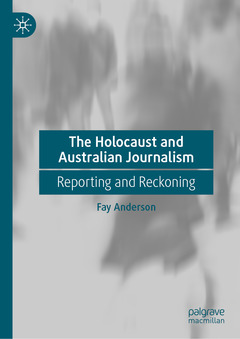Description
The Holocaust and Australian Journalism, 1st ed. 2024
Reporting and Reckoning
Author: Anderson Fay
Language: English
Subject for The Holocaust and Australian Journalism:
Keywords
Holocaust; Journalism; Media History; Australian History; Biography
311 p. · 14.8x21 cm · Hardback
Description
/li>Contents
/li>Biography
/li>Comment
/li>
This book explores the Australian press reporting of the persecution and genocide of European Jews, and the extent to which the news of the Holocaust was known and believed, revealed and hidden, and acknowledged and minimised. Spanning the coverage of Hitler?s political ascent in the 1920s through to the Nazis? extermination campaign, it culminates in the accounts of the trials of Nazi war criminals and the post-war transnational migration to Australia of Holocaust survivors, to a country far from universally welcoming in its reception of them. The book also tells the story of the journalists who reported on these tragic events and the editors who published them, along with the political, social and cultural context in which they worked, in an environment influenced by exclusionary ideas about race and nationality that did not necessarily inspire sympathy for Jews and their trauma. This book sheds light on the ethics of reporting human suffering, violence and genocide and ? centrally ? on the role of the press in shaping Australia?s collective memory of the Holocaust. It encourages readers to think critically about media power, public apathy, advocacy, and the importance of truth. Disturbing evidence of increasing anti-Semitism in Australia as elsewhere, along with continuing Holocaust denial, provide an additional urgency to this study.
Chapter 1. Introduction: The ‘long, long story’
Chapter 2. ‘Keep an eye on Hitler’: 1923 - 1932
Chapter 3. ‘The Nazis are Coming, Hurrah, Hurrah’: 1933 – 1935
Chapter 4. In Plain Sight: 1936 - 1939
Chapter 5. Looking into the Abyss: 1939 - 1941
Chapter 6. ‘They are killing all of us Jews’: 1941 –1944
Chapter 7. ‘One More Horror Camp’: 1944 – 1945
Chapter 8. War Trials, Refugees and Holocaust Awareness: 1945-1949
Chapter 9. Conclusion: The Reckoning
Explores the Australian press reporting of the persecution and destruction of European Jewry
Sheds light on the ethics of reporting human suffering, violence and genocide
Encourages readers to think critically about media power and public apathy




